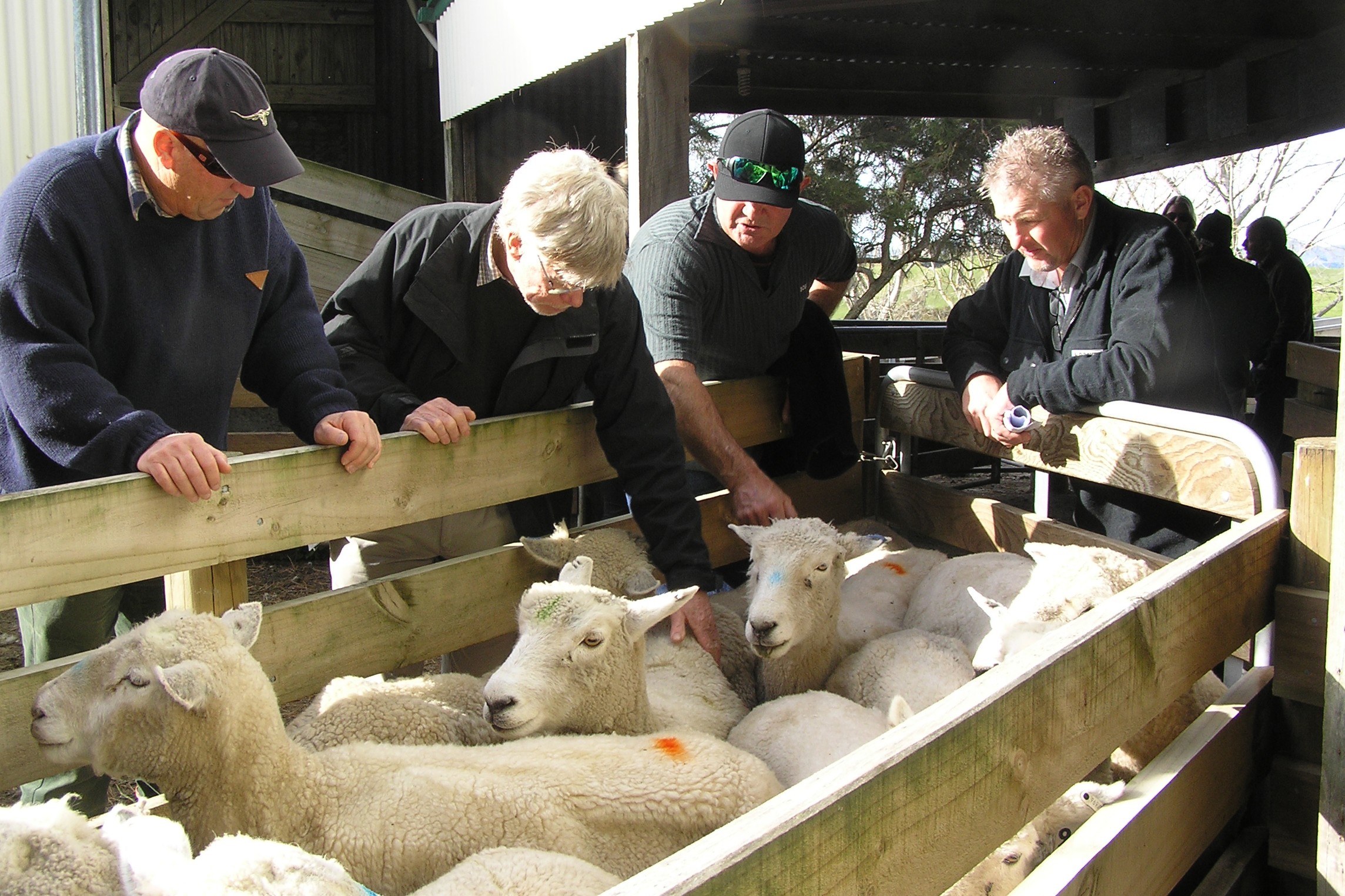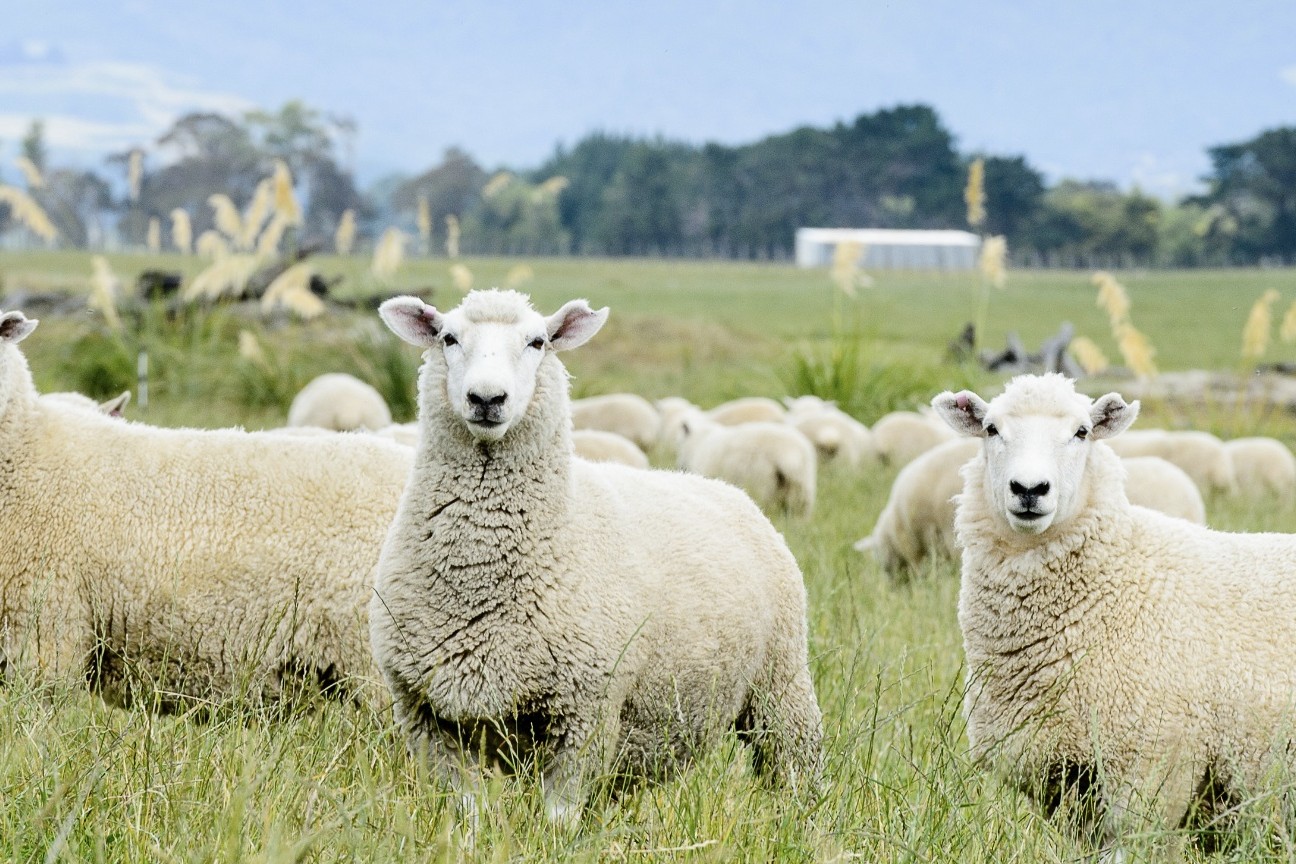Body Condition Scoring Drives Ewe Productivity and Profitability
Body condition scoring is a powerful tool to help sheep farmers increase ewe productivity and profitability through determining the most effective and efficient use of feed resources. Words Sandra Taylor.

Body condition scoring is in essence, an assessment of the amount of body fat or condition on an animal and in sheep, it is measured by feeling the spine and horizontal processes along the loin area. Sheep are then assigned a score between one and five, with one being very skinny and five being very fat.
From a productivity point of view, the optimum Body Condition Score (BCS) for a ewe is 3.5 and ideally, sheep farmers should aim to have all of their ewe flock at a BCS of above three all year round.
Dan Brier, B+LNZ’s general manager farming excellence says body condition scoring is a quick, easy and low-cost management tool that can have a significant impact on the productivity and profitability of the ewe flock while helping farmers use their feed more efficiently.
He says high sheep performance has been identified as a key driver of top performing farm businesses and the key drivers of profit in sheep flocks are the kilograms of lamb weaned per hectare, the weaning weight per lamb and the number of lambs weaned per hectare.
Body condition scoring influences all three, as the single most important factor influencing the profitability of a ewe flock is the number of ewes that have a BCS below three at mating and lambing.
“It’s about minimising the number of tail end ewes as these will be the ones that bring down the overall performance of your ewe flock,” says Dan.
He says the three most important times to BCS ewes is at weaning, pre-mating and at scanning.
Weaning
Body condition scoring ewes at weaning will allow farmers to identify poorer condition ewes (those with a BCS of under three) and either preferentially feed them to allow them to gain condition before mating in autumn or cull them.
Dan says ewes with a BCS of less than three could be run with ewe lambs, rotated ahead of the main flock or offered a summer forage crop.
The ewes with a BCS of three or above can be put on pasture control and maintenance or used to follow lambs and lighter ewes around. “It means farmers are not wasting valuable feed on ewes that can just be maintained over summer and the extra feed can be partitioned into growing lambs or putting condition on lighter ewes, which in turn increases their productivity.”
Pre-mating
According to Massey University’s Professor Paul Kenyon, the biggest percentage jump in scanning percentage will come from reducing the number of poor condition ewes at mating.
Body condition scoring ewes six weeks out from mating will help farmers identify the ewes with a BCS of below three so that they can be preferentially fed in the lead up to mating. This preferential feeding could include the use of supplements.
It also gives farmers the option to mate their lower condition score ewes to a terminal sire.
Ewes in good condition (at a BCS of three and above) can be maintained in the lead up to mating.
Scanning
Body condition scoring ewes as they are pushed into the scanning crate gives farmers the opportunity to adjust feeding levels based on both pregnancy status and BCS.
Dan says scanning is typically done at a critical stage of the production cycle when farmers have around five weeks to put condition on ewes that have a BCS of below three.
BCS is strongly correlated with lamb survival, a ewe’s mothering ability, lactation and pre-weaning growth rates.
Ewes with a BCS of below three can be drafted off and preferentially fed. This is especially important for multiple-bearing ewes.
“Feed supplies are typically tight going into lambing, so using scanning data in conjunction with BCS gives farmers the ability to partition feed into the ewes that need it most, which will be lighter condition, early lambing, multiple-bearing ewes.”

How to Score
To body condition score ewes, they need to be pushed into a drenching or drafting race reasonably tightly. The ewes need to be standing in a relaxed position. Starting from the back of the race, the scorer walks behind the ewes, placing his or her hand on each sheep just behind the 13th rib.
The scorer can use the balls of the finger and the thumb, feeling the backbone with the thumb and the end of the short ribs with the fingertips behind the last rib. The muscle and fat cover around the ends of the short ribs and backbone should be felt and scored on the one to five scale.
If the ewe is tense or packed too tightly in the race, it will be difficult to feel the short ribs and get an accurate score.
Dan says consistency with scoring is more important than the exact numbers. He encourages those learning to BCS to take their time in the first few races to get used to the differences between animals and make use of the resources available to learn this skill.
“Like any new skill, it takes a little while to get used to it, but once you have it figured out, farmers can go pretty quickly. It’s one of those things that really builds value onfarm. One farmer told me his team gets so much value out of condition scoring the flock that he suspects they do it too often!”
Beef + Lamb New Zealand has a number of Body Condition Scoring resources on its Knowledge Hub. These include videos, podcasts, fact sheets and resource books. Go to beeflambnz.com/knowledge-hub
Top Tips for recording and selecting for Body Condition
How heritable is Body Condition Score?
- It is moderately heritable (16-20%) and highly repeatable (79-95%). Ewes that rank above or below the group average at one time are highly likely to rank similarly at another time.
How do I correctly record BCS at the right times?
Best practice is to measure BCS and ewe live weight at mating which is recorded as BCSMATE. Other key times and codes are:
- Pregnancy Scanning (BCSSCAN)
- Lambing (BCSLAMB)
- Weaning (BCSWEAN)
- Dry-off (BCSDRYOFF) – Dairy Sheep only.
How do I read the ram’s EBVs for Body Condition?
When you are looking at a breeding value for body condition score (BCSBV), the higher the value indicates genetic merit for higher body condition. There is also an index for Dual Purpose Body Condition (DPBC) with a higher value indicating higher merit for body condition.




